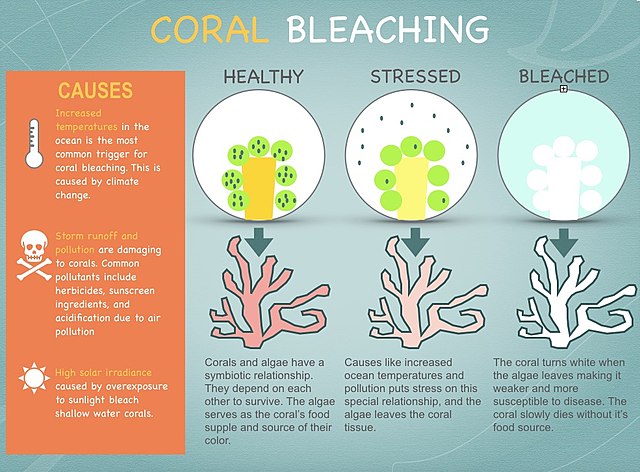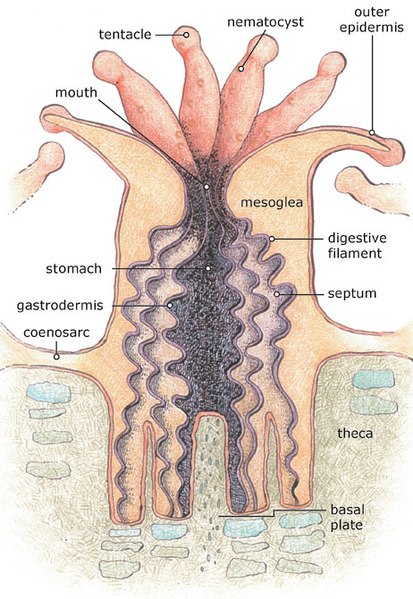Coral bleaching is the process when corals become white due to loss of symbiotic algae and photosynthetic pigments. This loss of pigment can be caused by various stressors, such as changes in temperature, light, or nutrients. Bleaching occurs when coral polyps expel the zooxanthellae that live inside their tissue, causing the coral to turn white. The zooxanthellae are photosynthetic, and as the water temperature rises, they begin to produce reactive oxygen species. This is toxic to the coral, so the coral expels the zooxanthellae. Since the zooxanthellae produce the majority of coral colouration, the coral tissue becomes transparent, revealing the coral skeleton made of calcium carbonate. Most bleached corals appear bright white, but some are blue, yellow, or pink due to pigment proteins in the coral.
Healthy coral
Bleached coral
Coral bleaching in ecosystems is a complex dynamic. Coral is able to slowly recover after experiencing bleaching, how ever it is a slow process which typically results in re-bleaching.
Coral and microscopic algae have a symbiotic relationship. When water temperatures get too high, the algae leave the coral tissue and the coral begins to starve.
Corals are colonial marine invertebrates within the class Anthozoa of the phylum Cnidaria. They typically form compact colonies of many identical individual polyps. Coral species include the important reef builders that inhabit tropical oceans and secrete calcium carbonate to form a hard skeleton.
Coral
Coral
Anatomy of a stony coral polyp
Montastraea cavernosa polyps with tentacles extended








